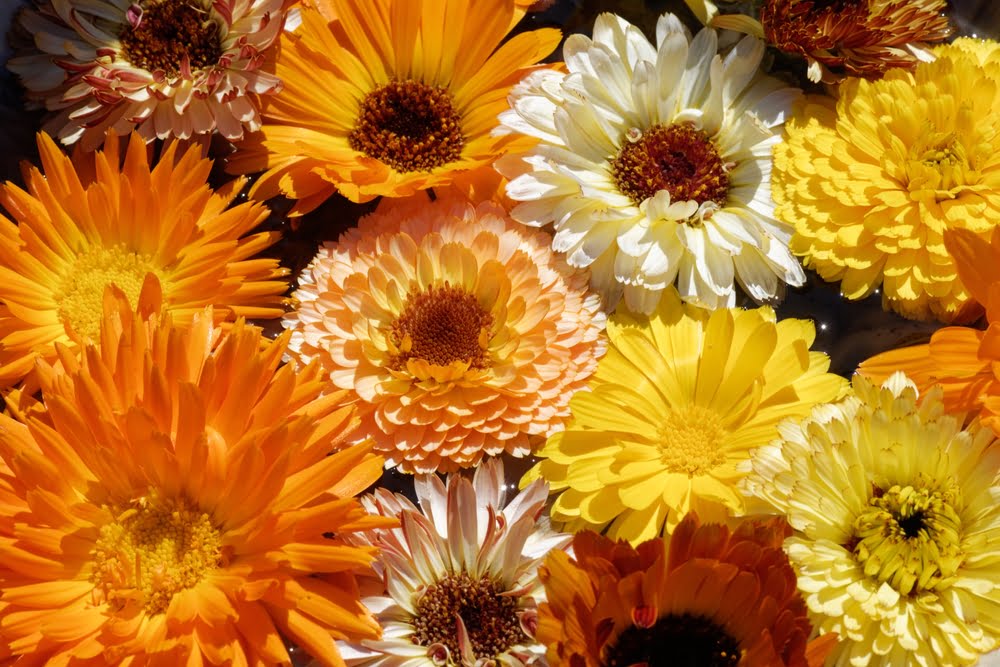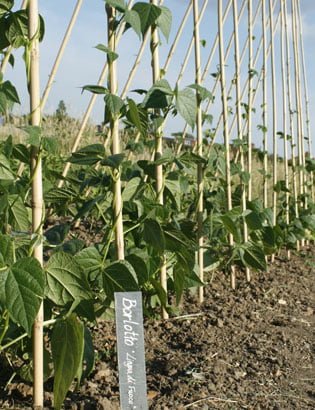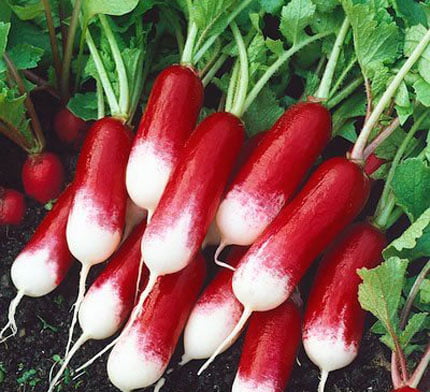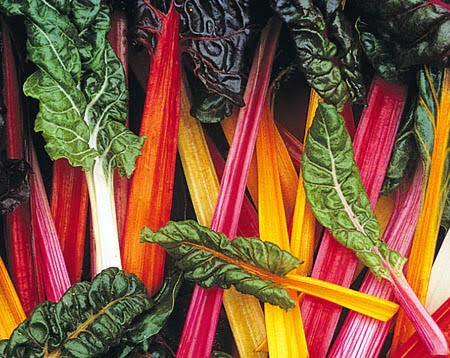In this Article
Introduction
Growing your own vegetables or flowers from seed is easy and anyone can give it ago. Whilst saving cash on your food shop or cut flower bill, the achievement of sowing your own seed which then turns into a vegetable you can eat or a flower you can enjoy, feels amazing.
Here’s our quick guide on how to sow seeds outdoors.
Sowing flower seeds outdoors
First decide whether you want to create drifts and clumps of flower blooms, or if you’d prefer regimental lines for growing cut flower varieties making them easier to pick.
How to sow seed in drifts and swathes
- Prepare the ground where you would like to grow your own flowers by weeding and lightly forking over the area to break up the soil.
- Firmly rake the ground to break up any big clumps of soil, removing any large stones and using the back of the rake to push the soil about until the ground is fairly level and the soil is light in texture.
- Scatter your chosen flower seeds evenly around the prepared soil.
- Sprinkle a small amount of peat free multipurpose compost over the ground to lightly cover the seeds.
- Gently water the newly sown seed using a watering can with a rose attachment or using the fine spray function on a hose.
- Be sure to add a label with the name of the flower seed variety written on as a reminder of what was sown where.
For ‘how to sow in drills’ see ‘Sowing vegetable seed outdoors’ section.
Easy flower seeds to grow from seed outdoors
Most flowers can be sown directly outside in a well prepared seed bed. Wait auntil the soil warms up with your sowings as in the cold the seeds will not germinate and even rot in a wet spring. Our most popular flowers to grow from seeds are all easy to grow and you can have a wonderful cutting garden in the summer, and not just you but all the bees will enjoy them too.
Cornflower
Perfect for a wildflower meadow or sown in swathes through a garden border. Cornflowers are good cut flowers to grow from seed too, sowing outdoors from mid spring until mid-summer. Sowing little and often will ensure a succession of Cornflower blooms throughout the summer and autumn season.
Poppy
Also known as Papaver, the poppy plant is very easy to grow outdoors from seed and if the seed heads are left to ripen and dry on the stem, they tend to self-seed ready for next year too. Poppy seed can be sprinkled over any gaps in a border or added to patches in a meadow simply by scattering the seed over the desired place along with a very light covering of peat free compost. They don’t require refined or deep soil to germinate or survive. Poppies are a good seed to sow outdoors for beginners.

Calendula
A good companion plant for the vegetable garden, preventing some pests whilst encouraging pollinators in, maximising the success of any fruiting produce being grown. Calendula can be sown directly outside in the ground or into a patio container from mid-spring until early summer. A good ‘cut and come again’ variety making Calendula the ideal cut flower to grow from seed. Dried Calendula petals can add a pop of colour and an interesting fragrance to homemade potpourri.
Tip: dead head regularly to encourage more healthy blooms to form throughout the summer and into the autumn.
Sunflower
A child-friendly flower to grow from seed outdoors. Go for tall varieties of sunflower which can be measured, a fun competition to see whose plant gets the tallest. Sow sunflower seed in a sunny border or container, sowing about 2-3cm below the soil. Water-in well and keep moist but not wet whilst growing & flowers develop.

Love-in-the-mist
AKA, Nigella. Another flower seed that’s easy to sow directly into a garden border or a patio pot. Choose a partly sunny/partly shaded space for best results. Not only are the flowers of Love-in-a-mist beautiful in blue and white tones, the seed pods look wonderful left on the plant to dry too. You can also save the seed from these dried seed pods easily by ‘popping’ them to release the seeds inside into a container. The saved Nigella seed can be then sown the following spring season, effectively providing free plants.
Top Tip: for a super easy way to sow a bunch of flower blooms closely together outdoors, put Nigella, Poppy and Cornflower seed in a small tub and mix-up. Then scatter the mixed seed over prepared borders, patches or containers. Cover lightly with peat free compost, water well & let the mix of seeds do the hard work for you. You should end up with a super vibrant and wildlife friendly mixed collection of flowers close together in your chosen space whilst saving time and care rather than sowing each individual variety separately.
How to sow flower seed outside in a container
Sowing seed outdoors doesn’t mean you need a big garden! A patio pot or window box can hold a good amount of flower blooms that can attract wildlife & pollinators too. Wildlife or meadow seed mixes are good choices for the container garden.
Grow a mini meadow from seed
Create a mini meadow by simply choosing a planter with drainage holes, fill approx. 2-3cm of the base with gravel and the rest with peat free multipurpose compost. Leaving about 4cm spare from the top of the container.
Sprinkle the wildflower or meadow seed mix over the surface of the compost. Lightly cover with a thin layer of compost and water gently. Keep soil damp but not wet throughout growing-flowering season.
Some of the flowers in a meadow mix are also good cut flowers, when buying your wildlife friendly, flower meadow seed ensure it includes poppies and cornflowers for cutting.
Three flowers to grow from seed in a container
- Nasturtium
- Sweet Pea
- Candytuft
All 3 can be sown in the same way outlined above. Thinning out is recommended when the seedlings have developed to give more space for each plant to grow strong and bloom successfully.
Sowing vegetable seed outdoors
Whether you have a large allotment or a raised bed, sowing vegetable seeds in lines known as drills, is the easiest and most successful way to ensure a neat line of crops that is easier to weed, maintain and an easy to pick when ready for harvest.

How to sow in drills
Start by weeding and forking over the ground. Break up soil clumps, remove large stones and use a rake to level out the area where you would like to sow your rows of vegetable or cut flower seed varieties.
Run a hand fork edge, or a hoe edge for larger areas, in a straight line through the soil creating a crevice, this is called a drill.
Sow seed by either sprinkling or simply placing seed neatly into the dip of the prepared seeds drill. Check out all of our quality seeds here.
The general rule is if the seed is fine such as a carrot, radish or poppy then sprinkling the seed into the drill is best. When the seedlings establish you can pick out excess plants, leaving in the strongest and healthiest with plenty of room around them to grow. This is called ‘thinning out’.
If the seed is larger, sow each seed individually and well-spaced out.
Top tip: larger seed are easier and less time consuming to sow as there is no need to spend extra time thinning out the seedlings later on.
Easy vegetables to grow from seed
Runner Bean
Fan of vertical gardening? Then runner beans are for you. Stick canes into the soil or place a large container or growbag under a trellis where the runner beans are to grow. Sow seed directly into drills or into holes if sowing in a container, where they are to be harvested from. Sowing as close to the base of each inserted cane as possible. The runner beans will wrap their growth around the canes to secure themselves as they grow up. Sometimes the growth needs a little guidance, gently tie-in the stems to the cane as the plants establish.
Top Tip: Sow 2-3 seed per cane to allow for any germination failures. No need to thin seedlings out, runner beans can thrive close together in the ground.

Spinach
A good value for money vegetable that is known as ‘cut and come again’ meaning you’ll enjoy more than one harvest from this popular leafy vegetable plant full of vitamins and nutrients. A fast-growing salad crop with only weeks to wait from seed germination to your first harvest. Windowsill vegetable, ideal for container gardens as well as larger areas like allotments.
When to sow spinach? Spring-autumn.
Radish
The perfect salad ingredient to add crunch and a peppery flavour, radish now come in a variety of shapes and colours including pure white, yellow as well as the classic pink tones. Round ping-pong shape or narrow lengthy roots, all of which can be grown in containers or in rows in a larger garden. Sow seed in small batches every other week to ensure a regular harvest throughout the gardening season.
When to sow radish? Spring- early autumn.

Chard
Grow your own stir-fry! Chard is not only an easy vegetable to grow from seed outdoors even in shade, it is another good ‘cut and come again’ variety that works well in stir-fries, similar to Pak choi. Choose rainbow chard mixes when buying seed, the stems of each leaf add a pop of colour to the garden making chard a pretty plant as well as being a highly nutritious edible.
When to sow chard? Mid spring-summer.

Pumpkin
A kid-friendly vegetable seed to sow outdoors. Pumpkins are fun and easy to grow from seed, whether harvesting for soup or to produce your own Halloween Jack ‘o’ Lantern they can be sown directly into the ground. Allow enough space around your pumpkin for it’s lengthy growth when sowing seed. Pumpkin plants can thrive fairly close together but avoid planting too close to salad crops or ornamental plants where the pumpkin can block out the light/nutrients. A solution for this space issue, and if you are sowing seed on a balcony or patio garden, is to add trellis, archways or metal grids securely leant together creating a triangle next to or over the pumpkin plants. This will allow the growth and tendrils to climb up, keeping them out the way of neighbouring plants.
Top Tip: water pumpkins regularly especially when a fruit has begun to form, they get very thirsty whilst developing.
When to sow pumpkin? Mid-late spring.
Sowing seed outdoors is easy once you know the basics. And it can save time as the need for pricking out, potting on and then planting out is removed. Whether you’re creating swathes of flower displays or enjoying your own vegetables, growing from seed is a cost-effective way to garden. The feeling of achievement from growing your own plants by sowing vegetable seed directly outside can be very mood boosting and great for wellness too.
Use this outdoor seed sowing guide to get you started on your homegrown journey today.

